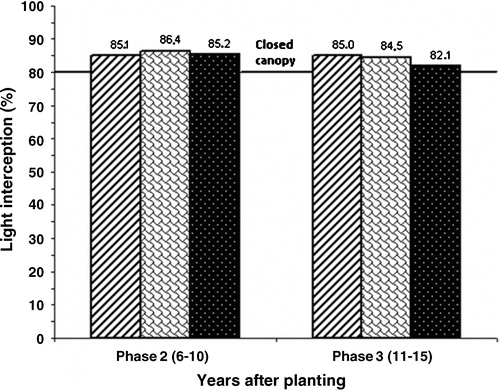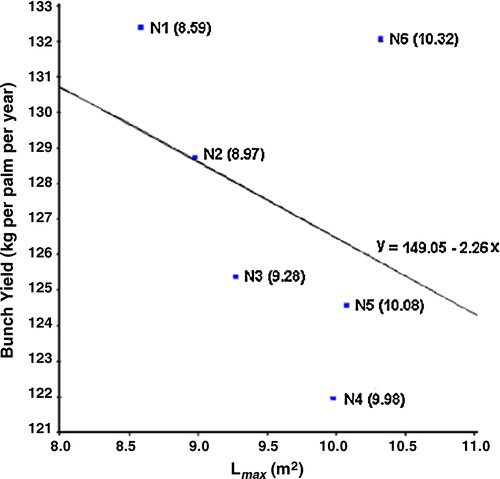Figures & data
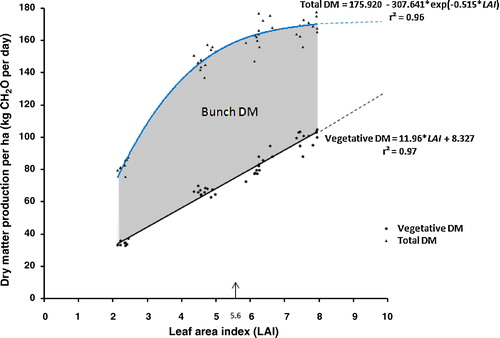
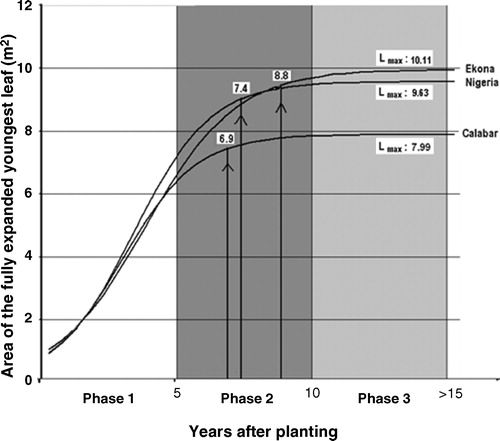
Table 1 Mean maximum leaf area (Lmax) of the Ekona, Nigeria and Calabar origins planted at 135 palms per ha, along with the 95% confidence interval and level of statistical significance (p-value) of differences between origins.
Table 2 Mean leaf area (m2) of the Ekona, Nigeria and Calabar origins planted at 135 palms per ha, over the first 8 years after planting, along with the level of statistical significance (p-value) of differences between origins.
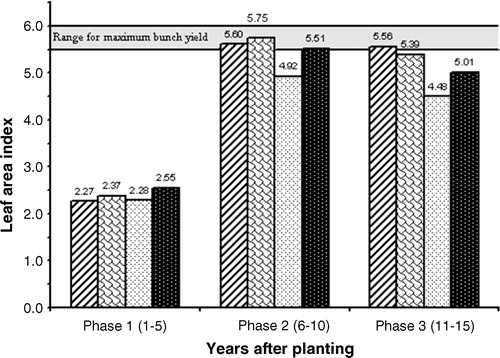
Table 3 Mean leaf area index (LAI) and 95% confidence Intervals of the means, during the three phases of canopy expansion, estimated for the origins Ekona, Nigeria and Calabar planted at a density of 143 palms per ha, and for Calabar* planted at 160 palms per ha.
Table 4 Differences in leaf area index (LAI) of the origins Ekona and Nigeria vs. Calabar estimated for a density of 143 palms per ha, and vs. Calabar* estimated for 160 palms per ha, along with the level of statistical significance (p-value), during the three phases of canopy expansion.
